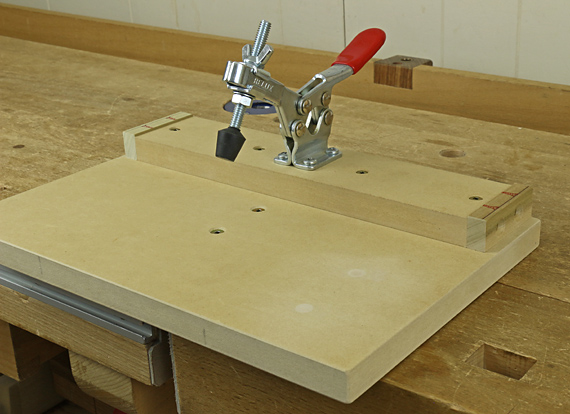
Tenon shoulders must meet stringent standards to produce a good joint – straight, at the correct angle to the length of the rail (usually 90°), accurately paired on both sides of the joint to meet the surface around the mortise, and in position to make the length of the rail fit the overall structure. Thus, whether produced by machine or by hand, you need a reliable method to tweak tenon shoulders. A shoulder plane has no equal for this task, but it needs a good work setup to make it function well.
This jig meets that need. In 2016, I wrote in detail about the jig that I had been using for many years. I usually use my Clifton 410 small shoulder plane or, for large work, the big Lie-Nielsen. For small work and other delicate adjustments, I like my little Japanese shoulder plane, used on the pull stroke.
To use both styles of planes, the jig should be reversible. Why didn’t I do this a long time ago? I removed the front cleat, and repositioned the bottom cleat, which fits in the tail vise, to the middle of the base.
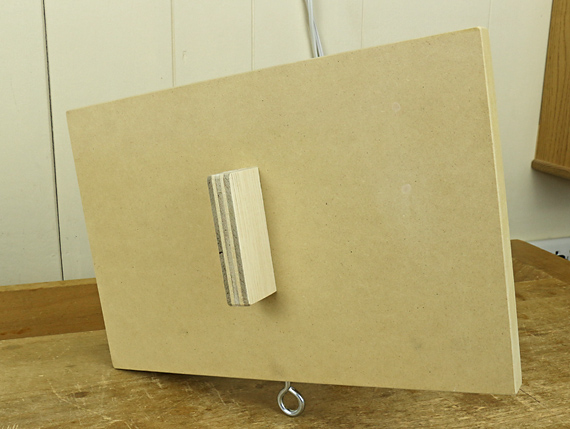
Now I can use the jig for push-style shoulder planes:
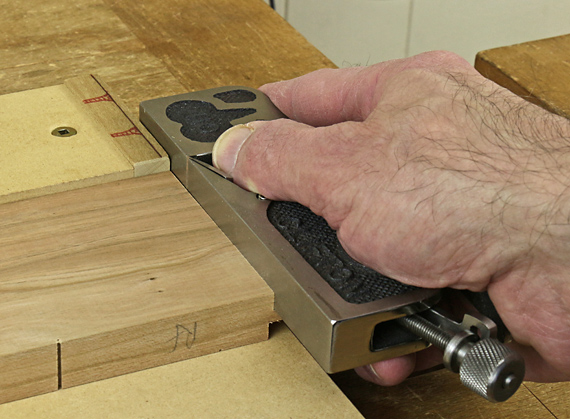
And, by rotating the jig 180° and using the other end of the fence, for pull-style shoulder planes:
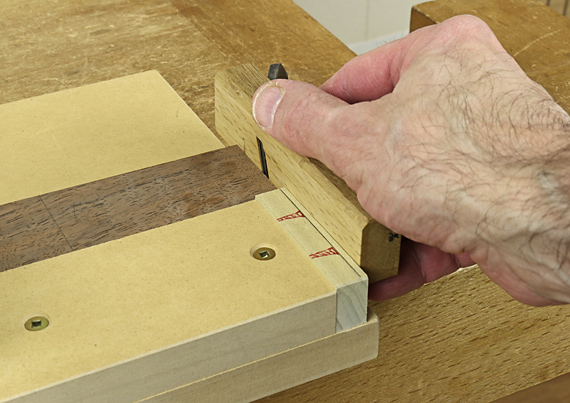
In either direction, the plane moves toward a hardwood backup piece that prevents spelching at the exit end of the work piece. This replaceable element is secured with deeply countersunk screws. The graphics on the top remind me of the presence and depth of the screw heads.
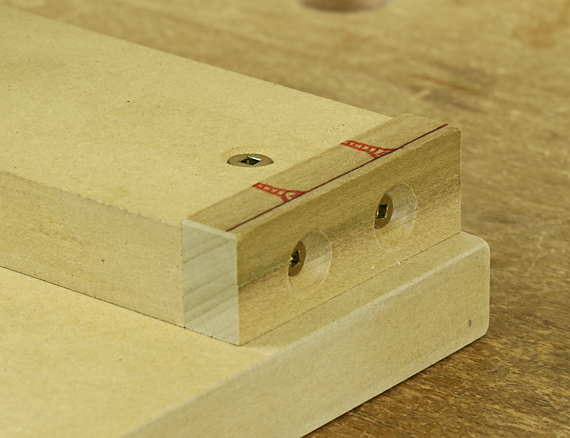
After this revision, the jig is reduced in overall size to about 8 1/2″ x 12 1/2″, but that does not matter. It can accommodate even large work pieces by using a scrap of wood under the rail for outboard support. The toggle clamp, along with the self-clamping effect of always working toward the fence, keeps the work piece secure.
The jig is quick and easy to build, and I think you will find it helpful for this exacting task.

